Even if you’ve committed the definition of “engaging your core” to memory and can easily repeat it to your confused workout buddies, actually walking the walk can be a challenge. After all, the actions required to contract and brace your core muscles, helping to create stiffness and stability in your midsection, aren’t exactly intuitive. But a straightforward hack recently posted on Instagram could help you finally master the movement.
Created by Katie Clare, D.C., a certified chiropractic sports practitioner in Minnesota, this core engagement trick involves lying face-up with a resistance band — which is attached to a kettlebell handle at your side — pulled tightly under your lower back. As you power through your abs exercise (Clare is performing dead bugs in the demo), you’ll work to keep the resistance band taut. If it goes slack, that’s your cue your core is no longer engaged.
And this isn’t just another viral hack that lacks legitimacy: This simple core engagement trick actually works, says Kelly Froelich, a certified personal trainer and co-founder of the digital fitness platform Balanced. To properly engage your core — which consists of muscles in your abdomen, back, and pelvic floor — you’ll want to tense your midsection as if someone were about to punch you in the gut, she says. This bracing then alters how your spine is positioned, making it “neutral.” “You have a natural curve in the lower part of your spine if you’re just sitting normally, but when you engage your core, that curve basically flattens,” she explains. “If you’re not engaging your core, then that natural curve of your spine is back. This is actually a pretty good trick to make sure you’re engaging that core, pressing those back muscles into the ground, by doing that with the resistance band.”
It may seem like a small detail that doesn't really matter, but you'd be totally wrong there: Properly engaging your core is essential to get the most out of your workout and avoid injuries — not just in fitness but in life. "If you don't have that engagement, those core muscles don't work, and there are actually other muscles that make up for it," says Froelich. When you're performing leg raises, for example, without activating your core (the prime mover for the exercise — aka the muscle group most responsible for the movement), other muscle groups, such as your hips, will pick up the slack to carry out the move, she explains. "Those secondary movers will take over more work that they're not used to doing, so that can cause strain and injury," says Froelich. Keeping a resistance band pulled tight under your back, however, can help you ensure all the proper muscle groups are working to complete the exercise.
Although this novel hack can be performed only during supine exercises, it’s still useful if you’re planning to do upright or prone movements in other aspects of your routine. “The goal and function of your core are to stabilize, and so the best way to do that is through bracing or holding your core in a clenched position,” says Froelich. “By doing that with the resistance band, you’re forcing yourself to really hold that engagement of the core, [which is] really important when doing any core exercise.” In other words, practicing this trick regularly — even without doing dead bugs or leg raises — will teach you exactly what it feels like for your core to be engaged. Then, when you tackle other exercises that call on your core stability, such as Russian twists, planks, and squats, you’re able to remember that braced feeling and adjust your form as necessary.
What's more, the resistance band trick can be a useful tool for any person, regardless of fitness level, says Froelich. "This is amazing for beginners — even if you're not doing any movement of your body — to just feel that core brace, to get those stabilizer muscles working," she explains. "I think it's also a really good check for intermediate or advanced athletes who want to make sure they are still bracing their core if they are adding on more choreography or other movements [to an exercise]." Translation: You're never too much of a pro to work on your core engagement technique — or try out a new Instagram- and trainer-approved hack.






































